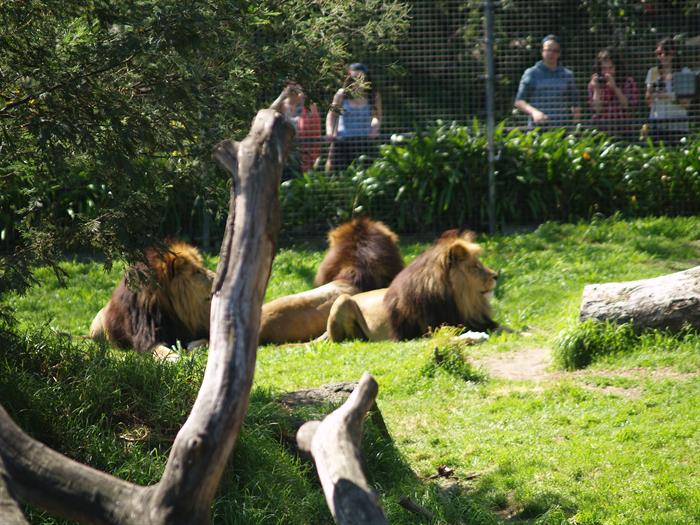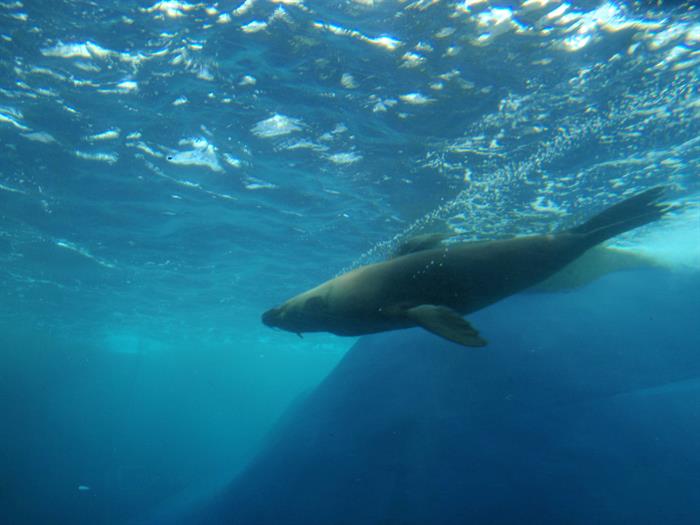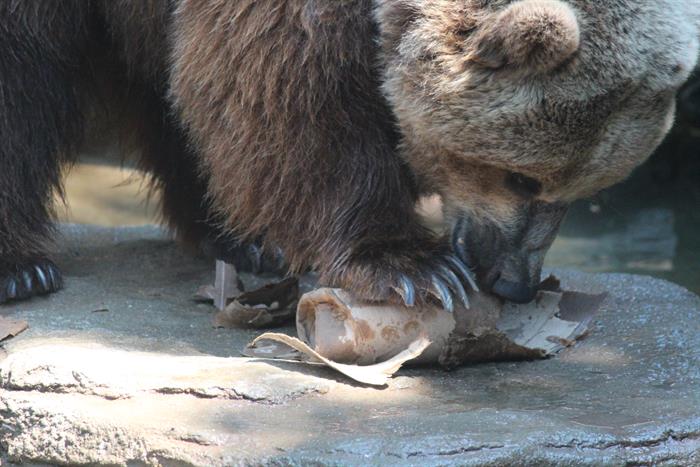Carnivores
How are Carnivores Classified?
Carnivore Taxonomy
The grandorder Ferae includes one single order: Carnivora; the Carnivores.

This group includes dogs, wolves, bears, racoons, cats, weasels, hyenas, seals, sea lions and walruses. Animals belonging to the order Carnivora are readily identified by their prominent canine teeth. These are long, curved teeth, located beside the incisors. Most have short, sharp incisors that are good for nipping at prey; but some e.g. large cats have large incisors that can kill with one bite. Most are predators that hunt and eat meat.
Carnivores have strong jaws and powerful muscles in the head and neck and a heavy skull. These characteristics enable them to use the incisor teeth more effectively.
Carnivores are Fissiped or Pinniped, characteristics that refer to their feet. Most carnivores have toes that are separated. These animals are known as Fissipeds, and they include cats and wolves. There are some species, those that are aquatic, that have toes that are joined, a feature that helps with swimming. These “fin footed” types are called Pinnipeds. Seals and sea lions are examples of pinnipeds.
 Order CARNIVORA
Order CARNIVORA
The order Carnivora is made up of about 250-300 species of mammals in 8 -12 families. The main distinction between other mammals and carnivores is their eating habits: carnivores are strictly meat-eaters. Although insectivores also feed on meat, they are classed separately because of their appearance, and no carnivores eat only insects. Many carnivores do feed on plants, but this is not their staple diet.
Carnivores are typically large in size, from the size of a house cat to a Kodiak bear. They all have furry or hairy coats that usually thicken in the winter. Many are nocturnal. The teeth are well developed and include molars and sharp canines ideal for the shredding of meat. The sense of smell is very acute, as is the sense of sight in most species. Pack hunting is mostly consistent with the canines, felines, and hyenas. All carnivores have strong claws and chest muscles and prominent canines. The 12 families of carnivore are:
- Canidae (dogs, jackals, fox, wolves)
- Ursidae (bears, panda)
- Procyonidae (raccoons, lesser panda)
- Mustelidae (otters, weasels, badgers)
- Mephitidae (skunks-previously part of Mustelidae)
- Viverridae (civets, genets)
- Herpestidae (mongooses-often considered part of Viverridae)
- Hyaenidae (hyenas, aardwolf)
- Felidae (cats, lion, tiger)
- Odobenidae (walrus)
- Phocidae (true, earless, or hair seals)
- Otariidae (eared seals, sea lions)
Carnivores are naturally distributed throughout the world, except for Australia, New Guinea, New Zealand, Antarctica, and many oceanic islands. One species, Canis familiaris, apparently was introduced into Australia by human agency in prehistoric time and subsequently established wild populations on that continent.
Two living superfamilies of carnivores are usually recognised:
- Arctoidea (or Canoidea), with the families Canidae, Ursidae, Procyonidae, and Mustelidae; and the
- Aeluroidea (or Feloidea), with the families Viverridae, Hyaenidae, and Felidae. The Pinnipedia with families Odobenidae, Phocidae, and Otariidae are often regarded as a full separate order.
The smallest living carnivore is the least weasel (Mustela nivalis), which has a weight of 35-70 grams. The largest is the Kodiak subspecies of grizzly bear reaching a weight of 780 kg.
Most carnivores are terrestrial or climbing animals. The polar bear (Ursus maritimus) and the river otters (Lutra, Aonyx, Pteronura) are semi aquatic, and the sea otter (Enhydra) , seals, and walrus spend more time in water than onshore.

HOW TO LEARN MORE
Read a book, do a course, join an organisation; talk to people, observe the world.
Contact us -Talk to an Academic Officer
We provide a FREE COURSE AND CAREER COUNSELLING SERVICE
Learn from our experience.
[02/01/2026 05:51:00]